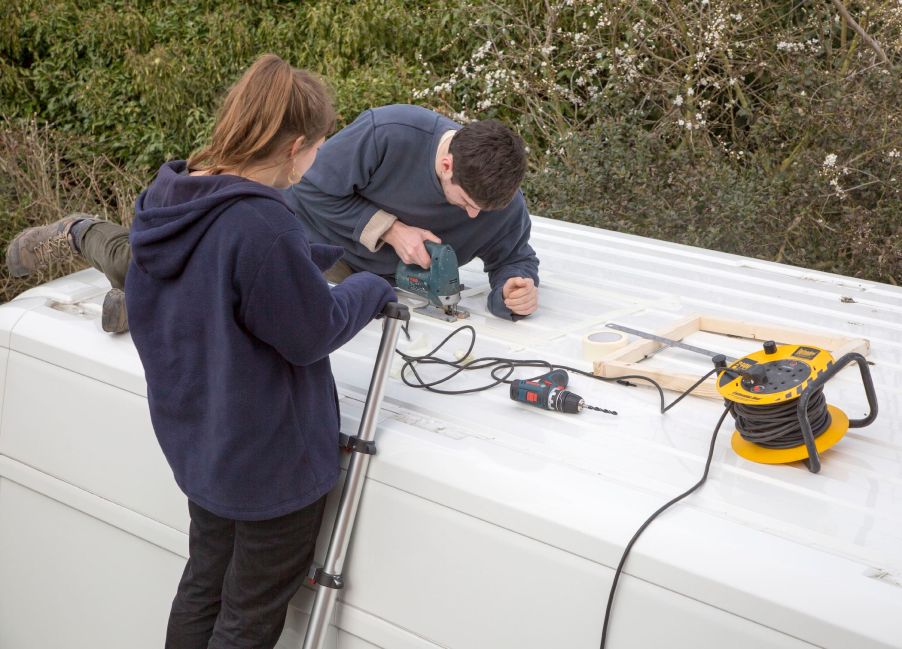
Why Do RV Roofs Always Seem to Leak?
Most people who own a recreational vehicle know that RV roofs leak. It is one of the most common problems in the industry, yet many first-time buyers aren’t even aware of this ongoing issue.
While a car can go a lifetime without a leaky roof, that isn’t the case for recreational vehicles. Most RV roofs leak when they experience unexpected damage or are exposed to harsh weather conditions.
An RV roof demands frequent inspection and regular maintenance to stop potential issues from getting worse. Water is the biggest enemy of an RV. It can quickly wreak havoc, sometimes totaling a unit because of excessive deterioration and mildew concerns.
It’s essential to understand how to identify an RV roof leak and know what to do to prevent it from happening to you.
Does the 10-year warranty cover my roof?

While an RV roof does come with a 10-to-12-year manufacturer warranty, it only covers defects in the rubber roof material. It typically does not cover sealants. Any damage caused by improperly sealed areas of the roof will be the responsibility of the owner.
That is why it is imperative to develop a regular routine for RV roof maintenance. At the time of manufacturing, a waterproof sealant is applied to all seams and rooftop openings. This caulk-like material is susceptible to the elements and dries out rather quickly. It needs to be replaced regularly to maintain a proper watertight seal.
Inspect the roof monthly to check for any potential defects. Reapply sealant to all plumbing vents, antennas, shower domes, skylights, and fan covers at least twice a year. Sealing the front and rear of the roof with industry approved sealant is essential to avoiding RV roof leaks, according to Nervda.
Common causes of RV roof leaks
It’s inevitable that you will experience issues with RV roof leaks at some point during ownership. How you handle it will make all the difference.
Whether it’s physical damage caused by scraping an overhanging tree limb or branches falling on top of the RV, there is always a risk of puncturing the roof. What seems harmless can turn into a much bigger problem when a small rupture is not repaired. It can eventually degrade the roofing material, allowing water to start leaking into the unit, according to Camper Grid.
Constantly being exposed to heavy rain, wind, dust, and excessive heat can cause severe damage to a roof. Without proper care and maintenance, the roof will deteriorate over time. Other possibilities for RV roof leaks may be as simple as the ladder is starting to pull away from the rooftop, allowing water to seep into the ladder joints.
Storing heavy cargo on the roof can damage the roof’s integrity and cause dents, scratches, and holes. Attaching add-on items such as solar panels, bike racks, or storage containers can also cause leaks through the screw holes. When an RV begins to show signs of age, water can start intruding into small rooftop entry points.
Maintaining an RV roof
Despite the expensive price tag, some RV models are often poorly made. The caulking material used by manufacturers degrades over time, so it is imperative to replace the sealant as needed. There are many quality products on the market to make resealing the roof an easy task for RV owners.
RV roof leaks are not easy to detect. Often it takes water running down an interior wall to notice an existing problem, at which point it could be too late. When inspecting the roof, look for a wavy appearance or sudden increase in depressions. If you see valleys or a rippling effect, you most likely have water intrusion. If left untreated, the membrane will become detached, and the roofing material will release from the wooden frame.
Consumers need to understand what’s involved in RV ownership. Know the limitations and familiarize yourself with potential problem areas in your recreational vehicle. Develop a maintenance routine and take care of issues before they require major repair. This will leave you more time to enjoy your next adventure.


